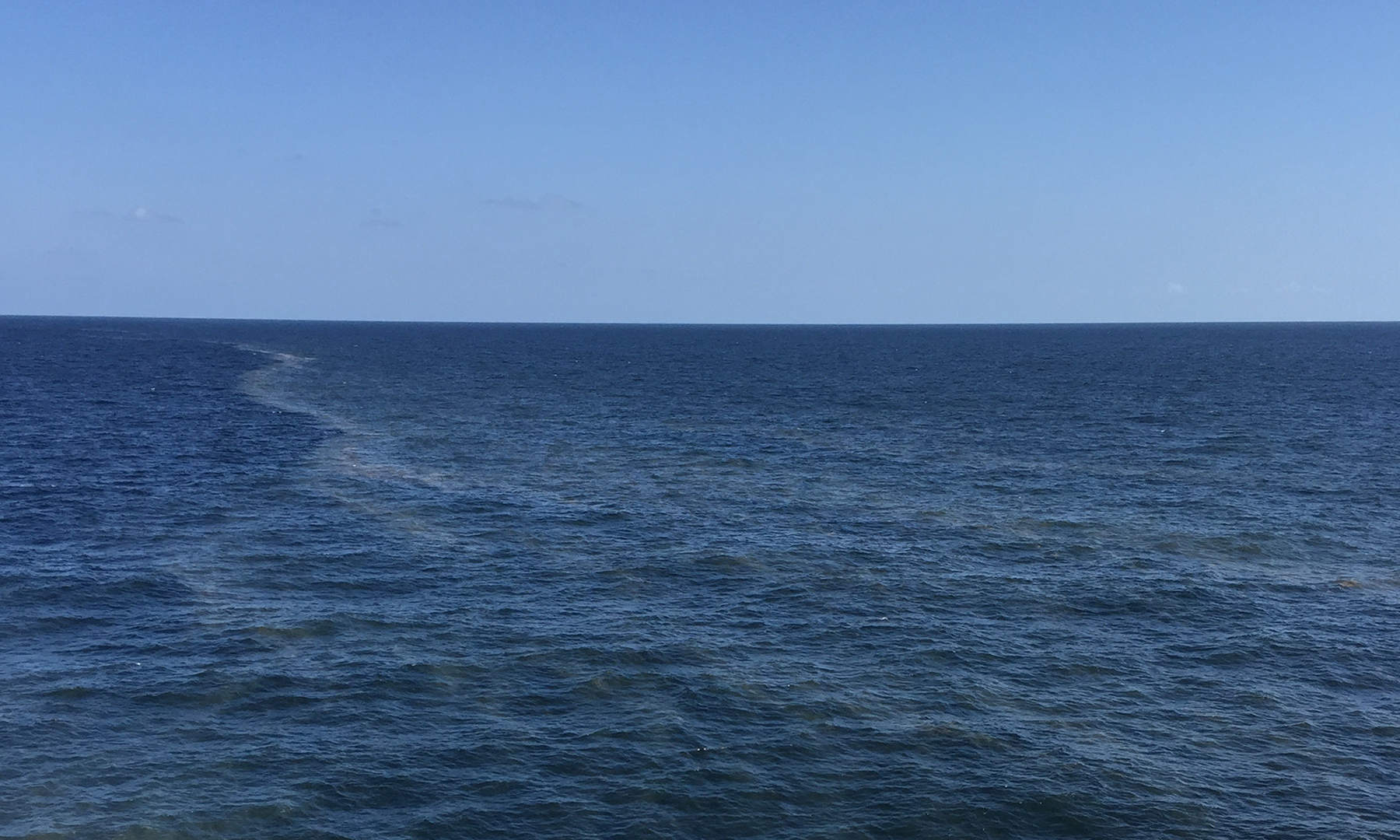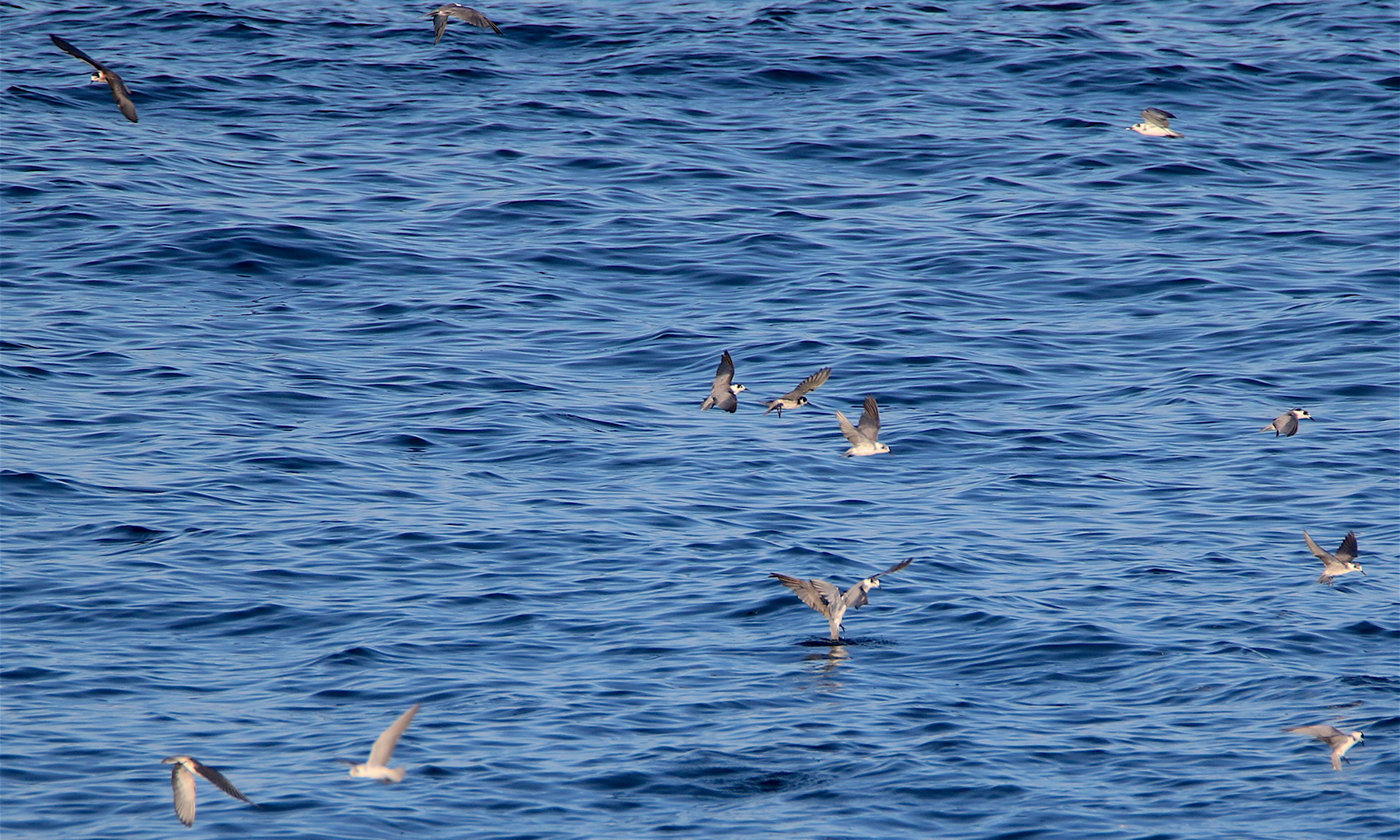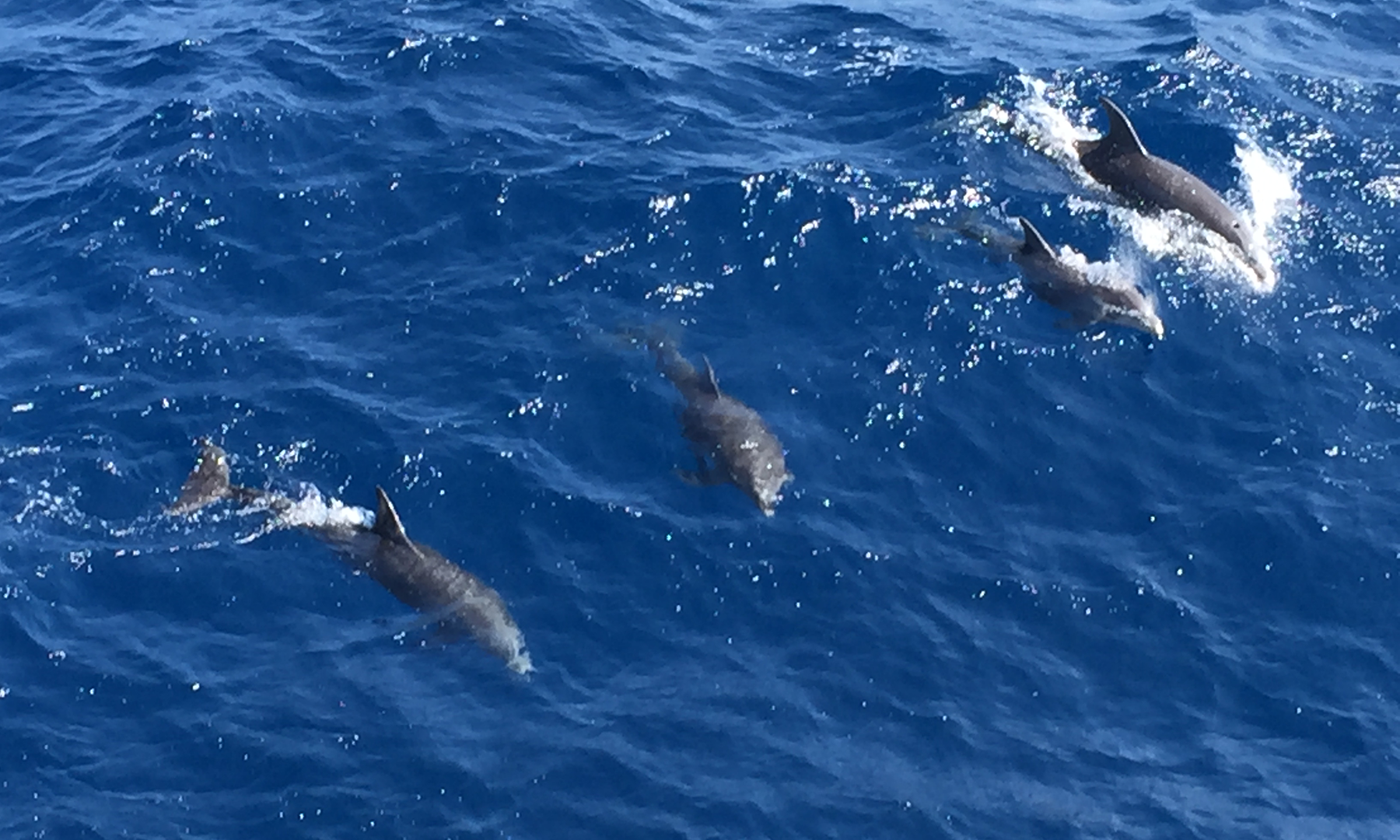Life Beyond the Horizon
Published by Ocean Conservancy
Last month I had the wonderful opportunity to spend 3 weeks on a research ship that travelled back and forth across the Gulf of Mexico from the coast of Mississippi to the southern tip of Texas. Our goal was to record the bird, marine mammal and sea turtle species and where they occur in this region from the flying bridge of the NOAA research vessel Gordon Gunter. This is part of a multiyear study from the Bureau of Ocean Energy Management to better understand what animals live in the Gulf and where they can be found throughout the different seasons.


One thing the BP Deepwater Horizon oil disaster showed us is that we do not have a thorough understanding of what, when, where and how many animals live out there. This is especially true with seabirds like black terns, brown boobies and Audubon shearwaters. These birds are rarely seen from shore and nest in far-flung areas outside the Gulf. In just over 14 days on this research cruise we observed 7,860 birds, one-third the number of birds that scientists saw during the nearly 300 days of the BP oil disaster assessment. Because scientists saw so few seabirds flying around offshore in 2010, the overall number of seabirds in the Gulf on a “normal” day—a healthy baseline, we’d call it—was estimated relatively lower than it may in fact be. Thanks to more abundance surveys like this one, it is likely that there are far more birds in the Gulf’s open ocean environment than estimated during the oil disaster assessment.
Life in our ocean is very dynamic, meaning the habitats do not stay in one place. The habitats of open water flow with the currents. Much of the wildlife activity is concentrated at the boundary between different water masses like the loop current with its warm, tropical water and the eddies that spin off the loop current and migrate west for many months, or the sediment-rich water flowing from the mighty Mississippi. When you’re out there you can easily see the difference between these water masses by the different colors of water and the animals you see in them. This region represents a kaleidoscope of every color blue imaginable.


One notable observation from this trip is the importance of the Mississippi River to the abundance of life in the Gulf. The region around the Mississippi delta was particularly abundant in marine life. As the water flows from the river it mixes with our ocean water creating estuary-like conditions in open water. While we saw wildlife throughout the Gulf, we saw our highest numbers of birds, turtles and dolphins in this region.


As this study progresses and more research cruises count and observe how these animals use the Gulf, our appreciation for life in the open ocean can continue to grow. We will be able to better understand what’s at stake when we as humans try to balance our use of the Gulf’s resources with the health of the ecosystem. We were caught off-guard by the BP oil disaster, struggling to measure the extent of the damage because our level of knowledge about marine life in the Gulf beforehand was extremely limited. That is beginning to change through this research effort, as we try to cope with the effects of that disaster and to be better prepared for the next. I’m grateful for the opportunity to take part in it.
The post Life Beyond the Horizon appeared first on Ocean Conservancy.
Read the full article at: https://oceanconservancy.org/blog/2017/10/27/life-beyond-horizon/


